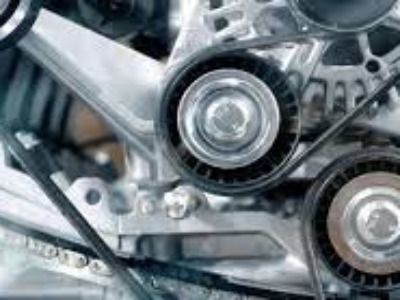Common Symptoms of a Worn or Failing Timing Belt and the Importance of Timely Replacement
The timing belt is a critical component in an engine's operation, ensuring proper synchronization between the crankshaft and camshaft. However, over time, the timing belt can wear out or develop faults, leading to potential engine damage. In this blog post, we will discuss the common symptoms of a worn or failing timing belt, emphasizing the importance of early detection and timely replacement.
Common Symptoms of a Worn or Failing Timing Belt:
1. Engine Misfires: A worn timing belt can disrupt the precise timing of valve opening and closing, causing engine misfires or irregular combustion. This can result in reduced performance, uneven running, or stalling.
2. Ticking or Clicking Noises: As the timing belt wears down, it may produce ticking or clicking sounds coming from the front of the engine. These noises indicate that the belt is not operating smoothly or has developed excessive slack.
3. Difficulty Starting the Engine: A worn timing belt can affect the engine's ability to start promptly. You may experience extended cranking or a delayed response when turning the key, indicating insufficient tension or compromised belt teeth.
4. Visible Belt Wear: Inspect the condition of the timing belt for any visible signs of wear, such as cracks, fraying, or glazing. If you notice these signs, it's crucial to address them promptly, as they indicate potential belt failure.
Importance of Timely Detection and Replacement: Early detection of worn or failing timing belts is essential to prevent extensive engine damage. If left unattended, a faulty timing belt can cause catastrophic failures such as bent valves, piston collisions, or damage to other vital engine components. Timely replacement of the timing belt ensures proper engine functionality, avoids costly repairs, and maintains optimal performance.

Example of Engine Damage due to Neglected Timing Belt: For instance, if a timing belt breaks while the engine is running, the pistons and valves can collide, resulting in bent valves and damaged pistons. This scenario may necessitate an expensive engine rebuild or replacement.
Benefits of Using Timing Belt Kits: Using a comprehensive timing belt kit offers several advantages. Firstly, it ensures that all necessary components, including the timing belt, tensioner, and idler pulley, are replaced simultaneously. This guarantees optimal synchronization and reduces the risk of premature component failure. Secondly, purchasing a complete kit provides convenience, as all required parts are bundled together, saving time and effort in sourcing individual components.
The timely identification and replacement of a worn or failing timing belt are crucial to prevent severe engine damage. Recognizing common symptoms, such as engine misfires, unusual noises, and difficulty starting, allows for prompt action. By using a quality timing belt kit and adhering to recommended maintenance intervals, drivers can ensure their engine's longevity, reliability, and smooth operation on the road.












